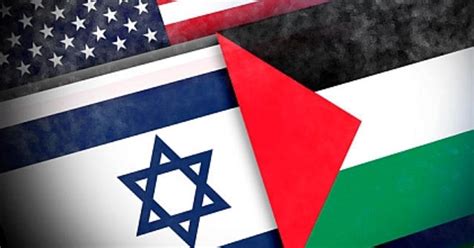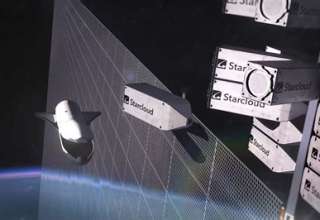By Richard Stone
Direct US military involvement inside Israel in support of the IDF has marked a significant development in the present Cold War changing balance of forces across the region and globally. It has enabled a much clearer assessment of how the US require Israel to continue to conduct regional operations, although with increasing difficulty as the balance of forces has begun to swing away from traditional hegemonic positions.
In mid-October the White House announced they were providing Israel with an advanced anti-missile system together with military personnel to assist the IDF. (1) The so-called Terminal High Altitude Defence (THAAD) system will be accompanied by about a hundred military personnel who will man six truck-mounted launchers and transportable radar; it was noted in official media releases, however, that, ‘with back-up that is likely to mean several hundred US soldiers on the ground in Israel’. (2)
The US already have THAAD systems elsewhere in perceived Cold War hot-spots: over a decade ago the US began placing similar systems across the Asia-Pacific region to contain and encircle China’s rapid rise as a competitor to US hegemonic positions. (3) An official media release from the Congressional Research Service, at the time, announced military planning for ‘laying the foundations for a region wide missile defence system that would combine US ballistic-missile defences with those of regional powers, particularly Japan, South Korea and Australia’. (4) The countries concerned remain highly strategic hubs for ‘US interests’.
Israel, likewise, is a strategic regional hub for ‘US interests’; it was created in the earliest days of the previous Cold War to serve US interests in a volatile region where US assessments saw potential threats from Arab countries with favourable diplomatic links to the former Soviet Union. While continually being portrayed as a western-style democracy, Israel has remained a questionable Apartheid-like statelet controlled from 1979 by those associated with the Jonathan Institute. (5) Founded by Benjamin Netanyahu in 1979, the shadowy intelligence-type US-Israel organisation, has remained composed of government and military officials engaged in joint and mutual foreign policy positions. (6) It remains the power-base of support for Netanyahu and his associates.
It is, therefore, no great surprise to find that in the recent vice-presidential debate in the US in early October, that Tim Walz, Democrat, stated ‘the expansion of Israel and its proxies is a fundamental necessity for the US’. (7) The present Netanyahu government in Tel Aviv is clearly pursuing US-backed foreign policy outside the UN agreed 1948 borders into neighbouring land which Israel, backed by the US, want to control for ‘US interests’. (8)
Surrounded by Arab countries rich in oil deposits and other resources, Israel was initially supported by Iran, which was a puppet state for the US. The two countries also had secret alliances, which included playing off different Islamic groups attached to Sunni or Sh-ia to destabilise the Arab world. The toppling of the Shah in 1979 by Islamic militants, however, ended the anti-Arab diplomacy. Throughout the following decades, furthermore, a US-led Cold War diplomatic position toward Iran succeeded in pushing Tehran into a main leadership position across the whole Middle East, irrespective of Islamic positions. Iran is now a major diplomatic player in the Middle East.
Iran has also been strengthened diplomatically in recent years by wider formal and informal alliances and agreements with China, Russia, Turkey and Syria. The US attempts to topple the Assad administration in Damascus can best be assessed as seriously back-firing and provided a shared common ground for the formal and informal agreements which seriously challenge US hegemony across the region.
The position of Israel for decades, nevertheless, has remained of the utmost strategic importance for ‘US interests’. Military assistance, during the recent period has revealed just how far the US will go to support their regional hub. Since 7 October last year the US have forwarded a record US$17.9 billion in military aid to Israel; an extra US$4.86 billion has also been used for US military regional operations together with further expenditure. (9) The Pentagon, for example, had an estimated 35,000 military personnel in the Middle East last October, the total has now risen to about 50,000. (10)
Individual costed items in the US military aid package have also been particularly revealing; expenditure ranging about US$4 billion have been directed toward maintenance of the Israeli Iron Dome defence shield, an umbrella type missile shield used to provide Israel from air-born attacks. (11) It is generally thought the recent Iranian missile attack on Tel Aviv damaged the Iron Dome, and has made Israel increasingly vulnerable to missile attacks.
The military assistance from the US to Israel is also but a fraction of the real financial outlay; Israel has a large defence industry serviced by the US, with a joint military-industrial complex, together with huge remittances from the US Zionist lobby in Washington.
In fact, the recent study of US military aid to Israel concluded with the statement ‘it was impossible to get the full details of what the US has shipped Israel since last October 7, so the US$17,9 billion for the year is a partial figure’. (12)
The increased US military assistance for Israel also has to be placed in a context of the period 1959 to 2023, whereby a total of US$ 251.2 billion were recorded over 65 years with an annual average of about 3.9 billion; the rapid increase in US support has shown just how desperate Washington and the Pentagon have become to credible regional challenges to Israel. It has highlighted the significance of the changing balance of forces across the Middle East.
The fact Iranian-backed forces have been able to simultaneous attack Israel on three fronts has shown how co-ordinated diplomatic opposition has become to the US-backing of Israel. It has to be placed in the contest of the present Cold War: it is also no surprise, therefore, to find China has been brokering talks between different sections of the Palestinian movement in order to secure an outcome to the present problems which enable China to use both Iran and Syria as strategic components of their One Belt, One Road, logistics system. China has a vested interest in a peaceful Middle East, whereas the US seek to destroy China’s successful diplomatic initiatives with the region, which are also backed by Russia.
Official media releases from the US, however, have revealed their chosen agenda has altered little throughout the decades, despite continual denial and their hiding behind allegations of anti-Semitism to stifle criticism and opposition. The continued dreadful and deceitful media coverage of the Israeli destruction of Gaza has, likewise, followed a common pattern; the stakes now, however, appear a much higher priority due to the changing balance of forces.
The control of the large natural gas fields only 36 kms off Gaza and continued speculation that Israeli real estate organisations have planning for Gaza, for example, are best viewed as part of the common pattern. (13) Demands by the Israeli government to remove UN-UNIFIL peace-keeping forces from Southern Lebanon is yet another example; Israel want to remove accredited peace-keeping forces acting as witnesses of IDF military activity. (14)
And, while the White House appear to have serious misgivings about the Netanyahu government and their continued violations of international law, the committing of war crimes together with failure to even recognise UN resolutions for Palestinian rights let alone implement what is required of Israel, the administration in Tel Aviv has been tolerated as it has faithfully served ‘US interests’. (15)
The credible challenge to its regional hegemonic presence now, however, appears with increasing clarity on the horizon; time, alone, will tell.
1. US to put boots on ground in Israel,
The Australian, 15 October 2024.
2. US help for Israel sets example,
Editorial, The Australian, 15 October 2024.
3. U.S. seeks new Asia defences,
The Wall Street Journal, 24-26 August 2012.
4. Ibid.
5. Covert Action – the roots of terrorism,
Edited by Ellen Ray and William H. Shaap, (Melbourne, 2003), page 51, page 164.
6. Ibid.
7. Snap polls give debate to Vance,
The Australian, 3 October 2024.
8. See: IDF has conducted 80 raids into Lebanon in the past year,
The Australian, 3 September 2024, which has provided reliable information about
Israeli covert operations in Southern Lebanon.
9. US military aid hits record $26 billion,
The Australian, 8 October 2024.
10. Ibid.
11. Ibid.
12. Ibid.
13. See: Wikipedia – Gaza Marine, and,
‘Cashing in on genocide’,
Harrataz (Israel), 19 December 2023.
14. See: UN troops should stay put: Italy PM.,
The Australian, 17 October 2024.
15. Biden’s tirades at that ‘bad guy liar’ Netanyahu,
The Australian, 10 October 2024, a review of a forthcoming book by Bob Woodward.






